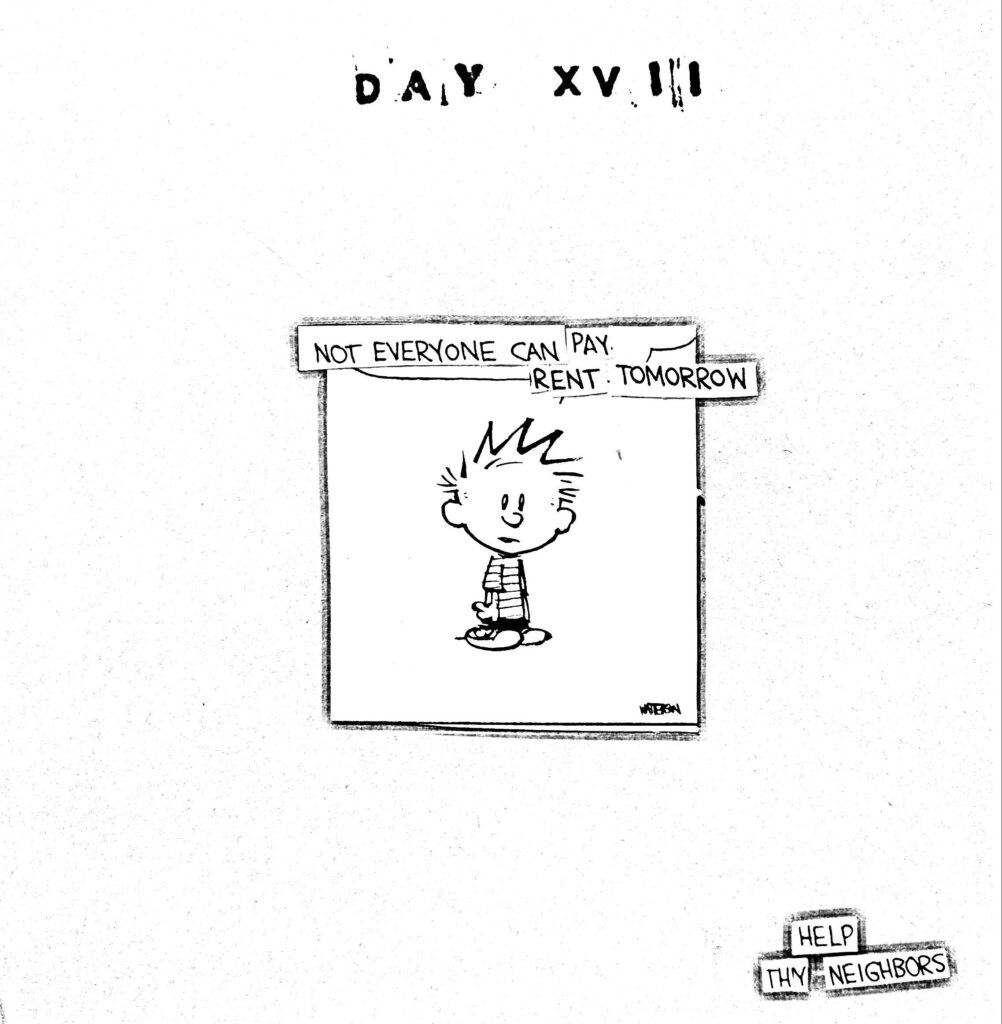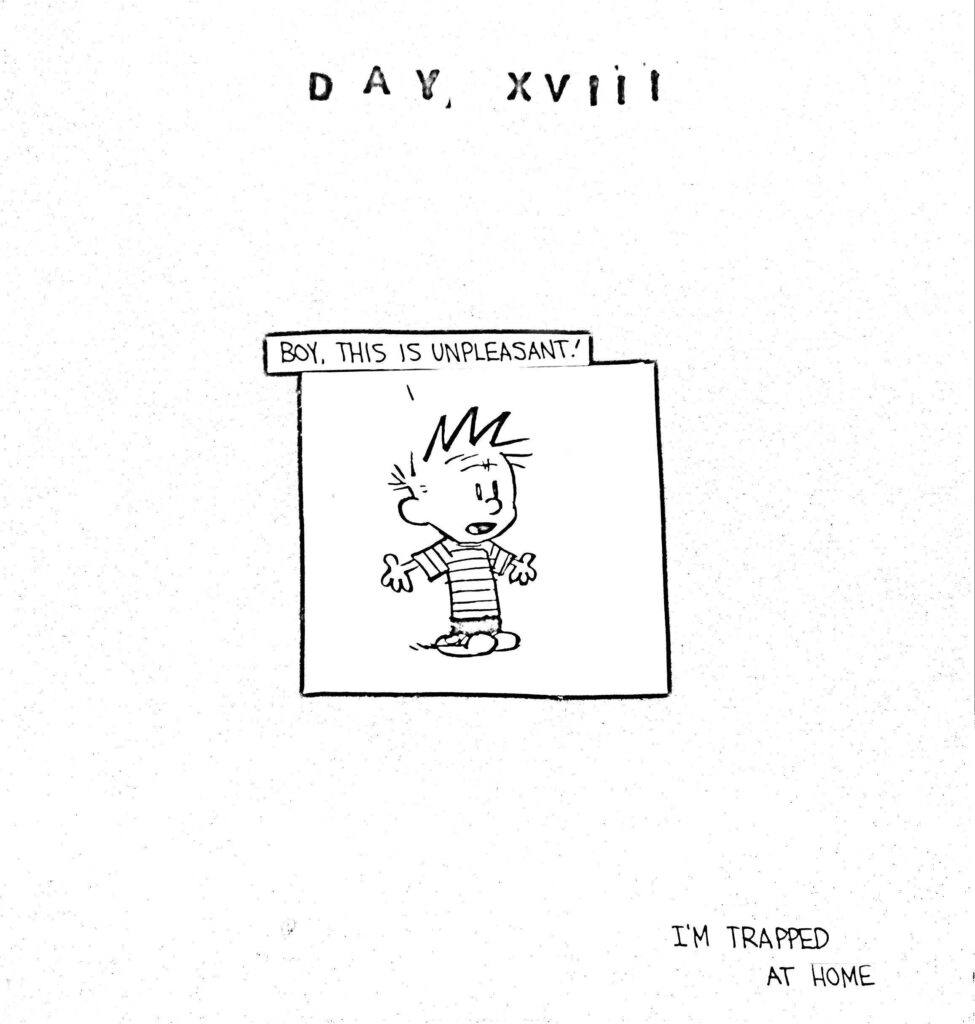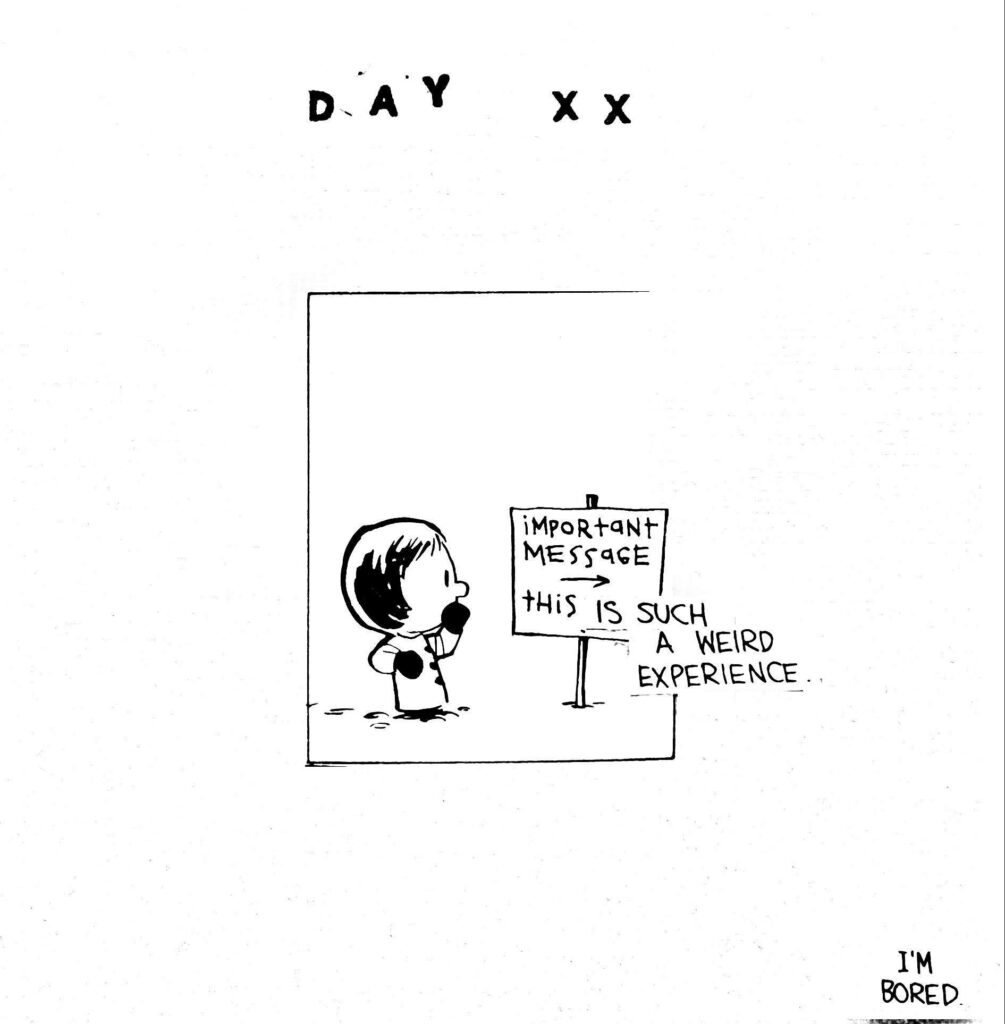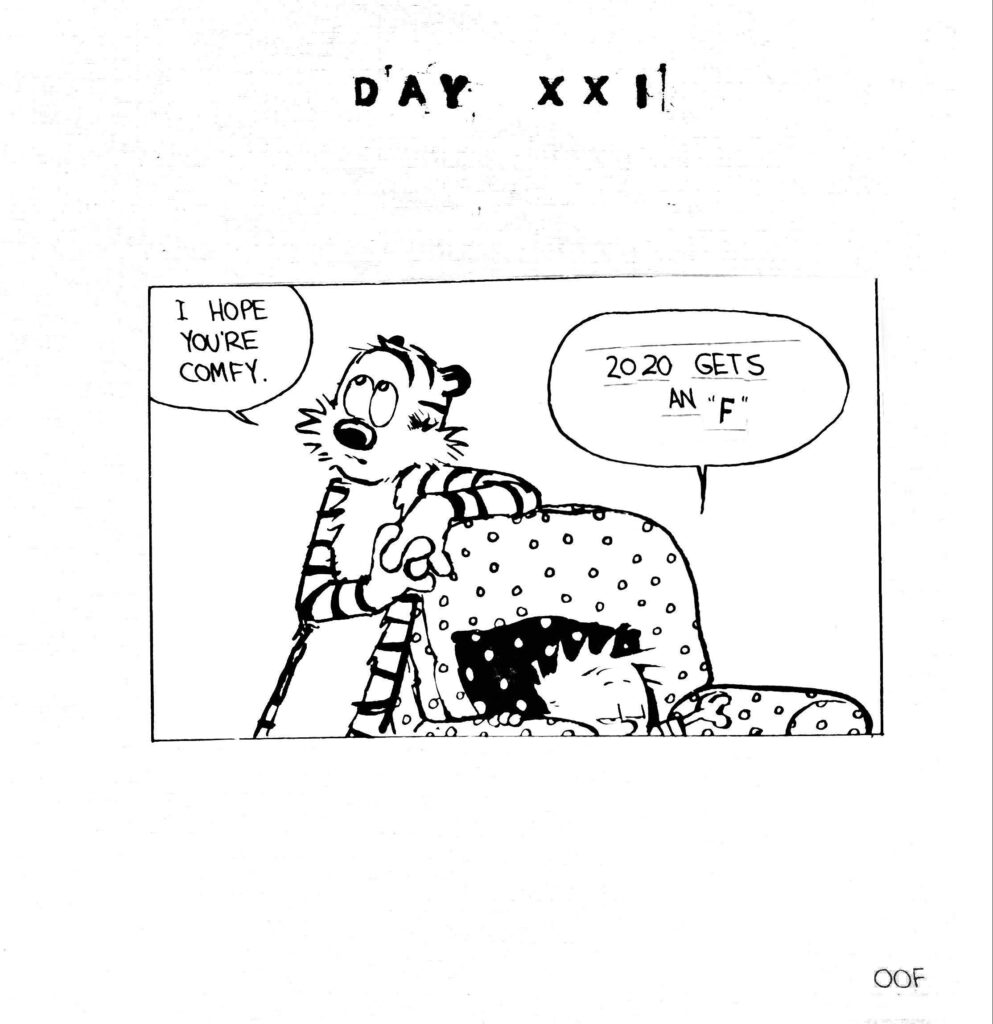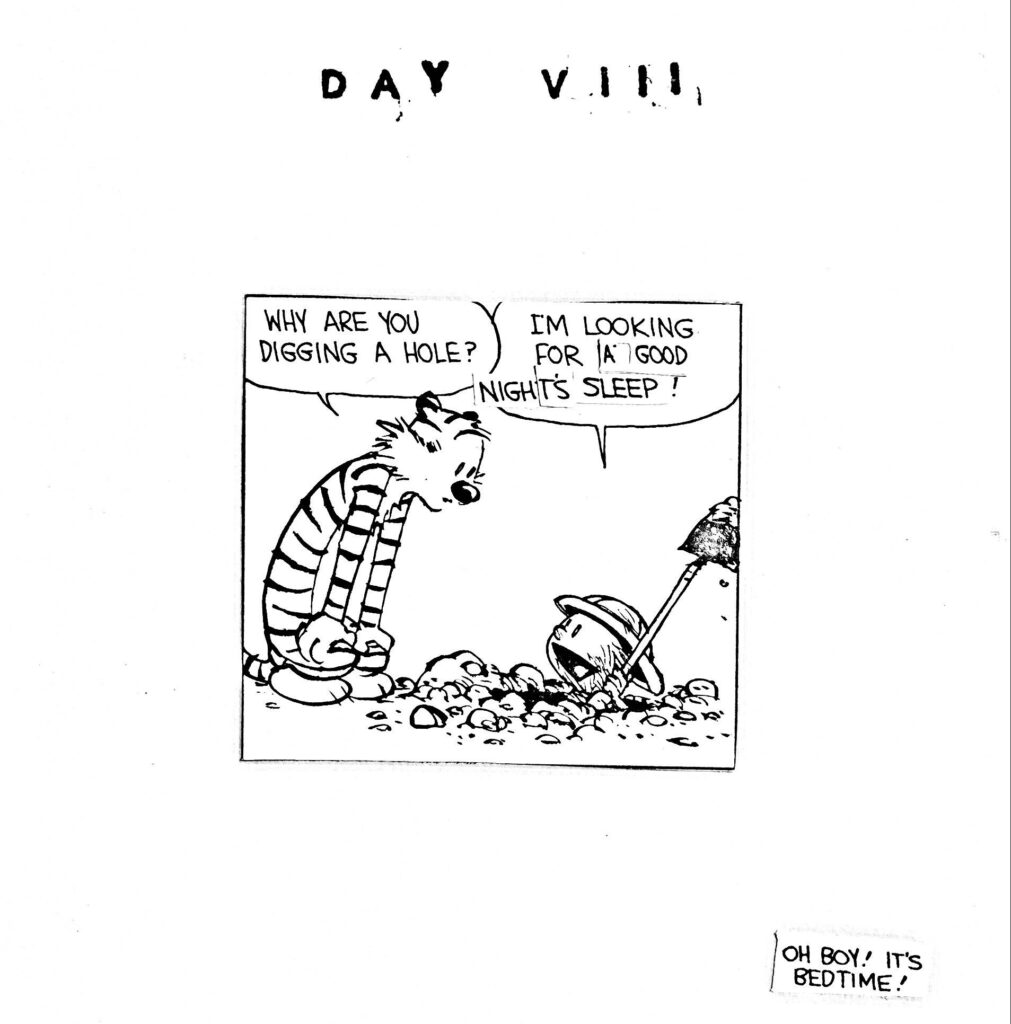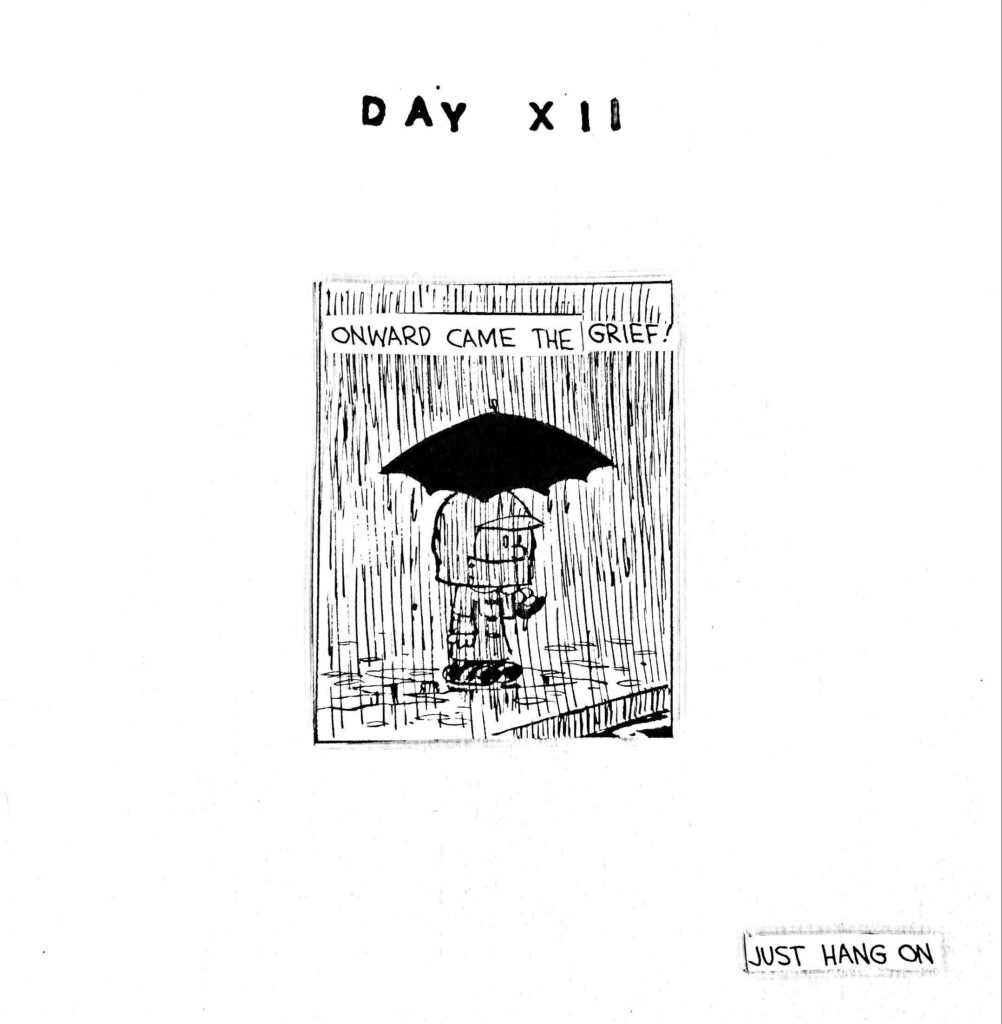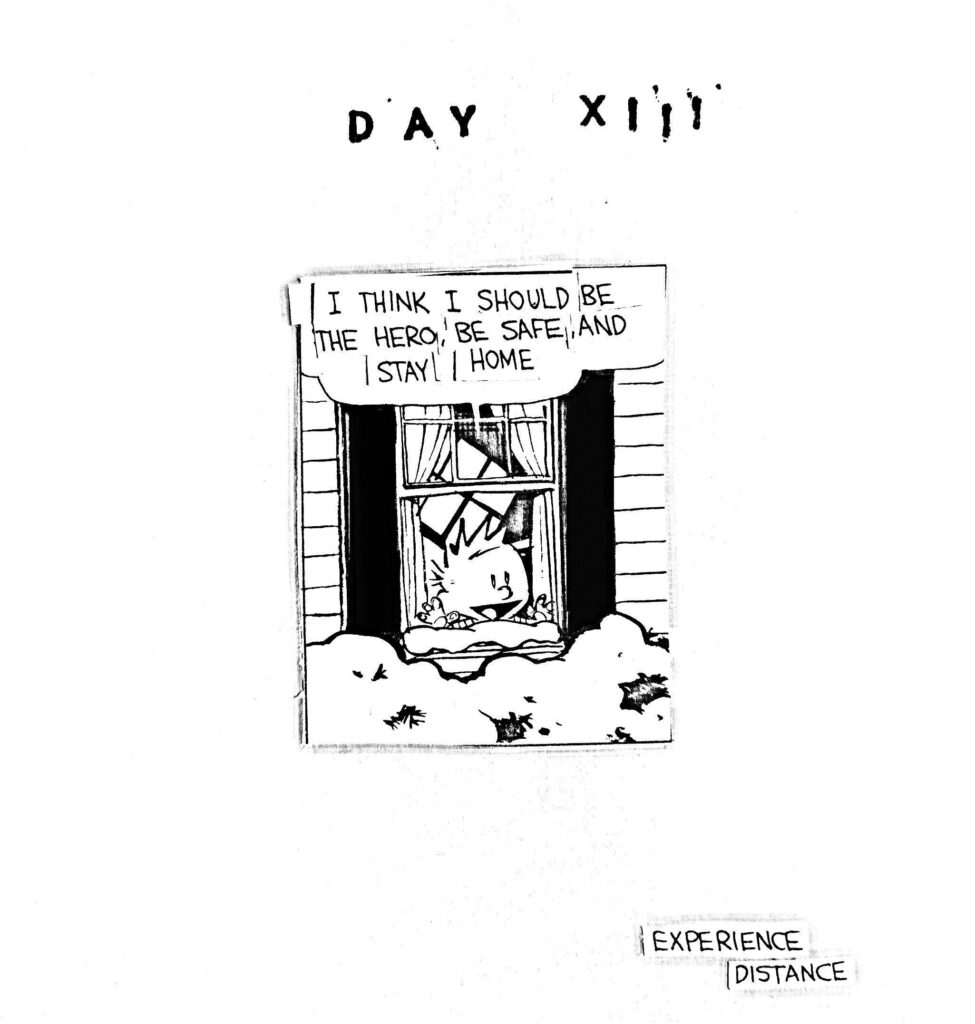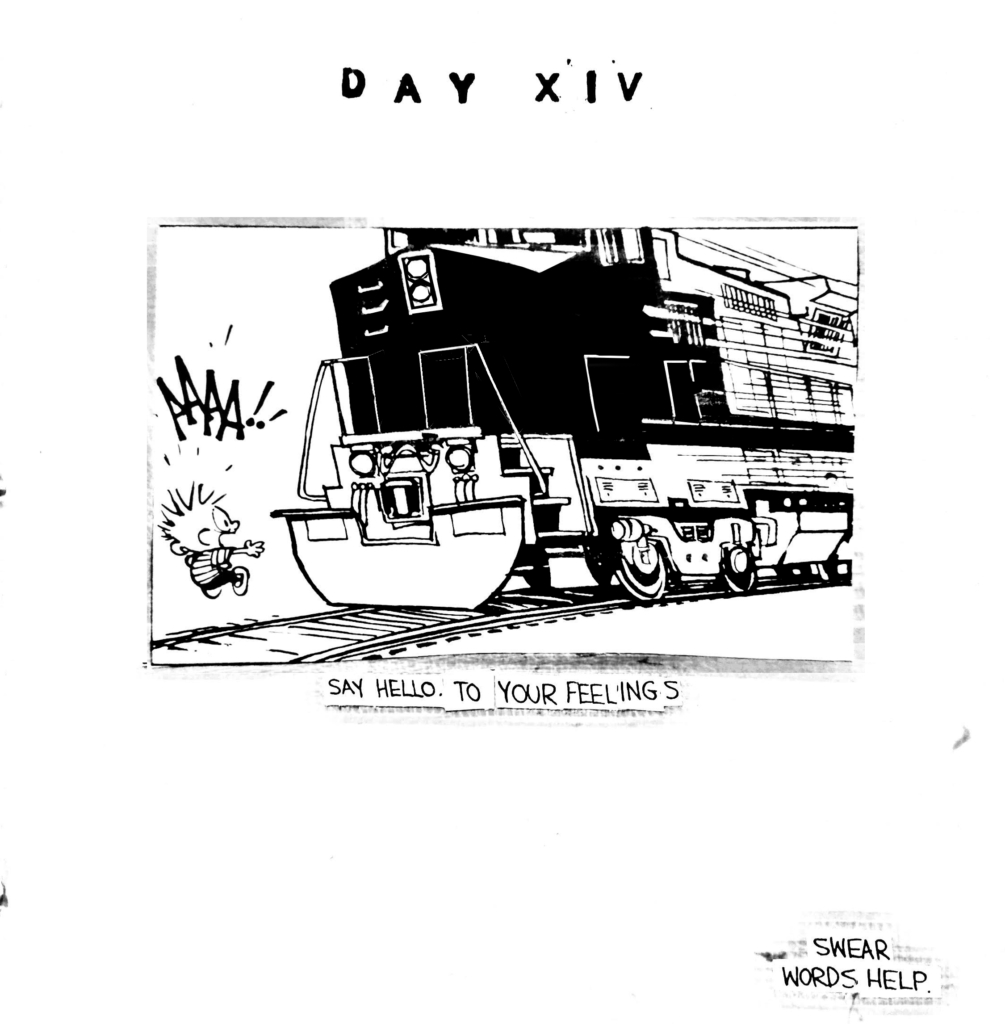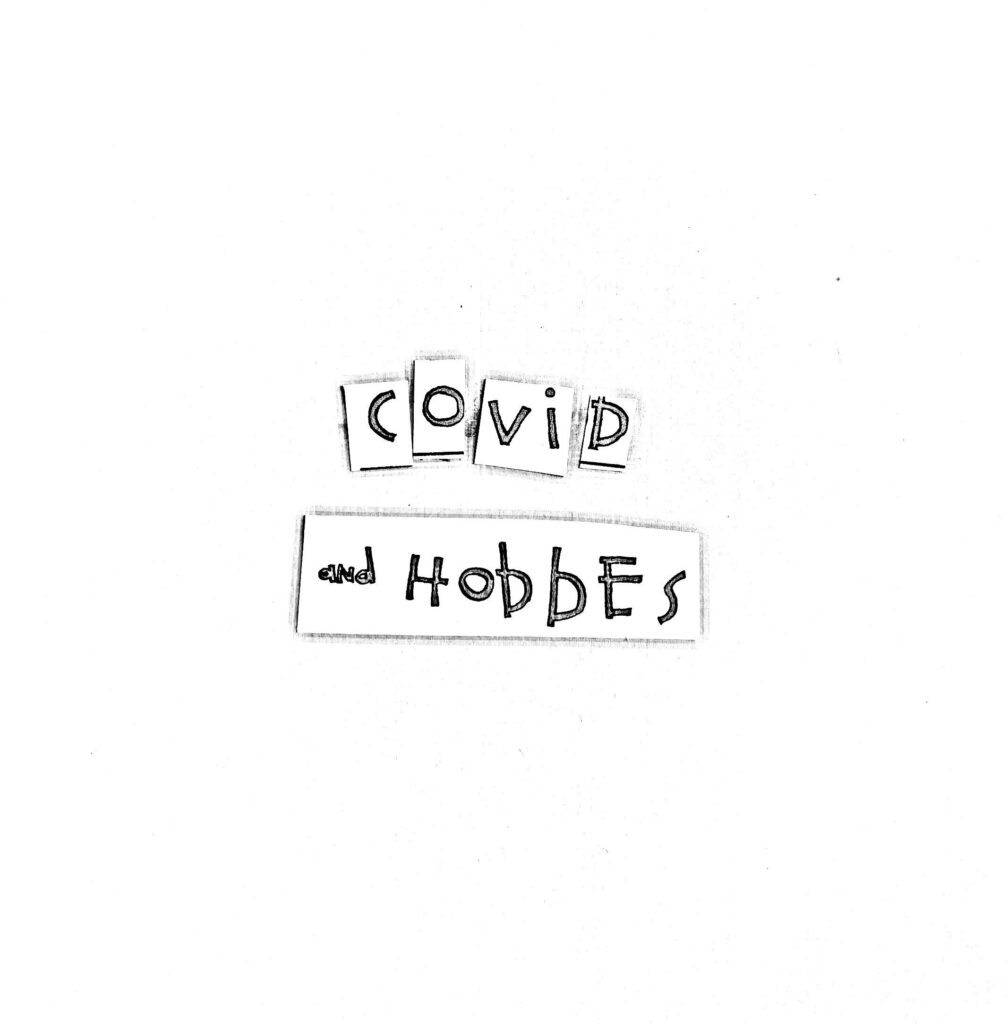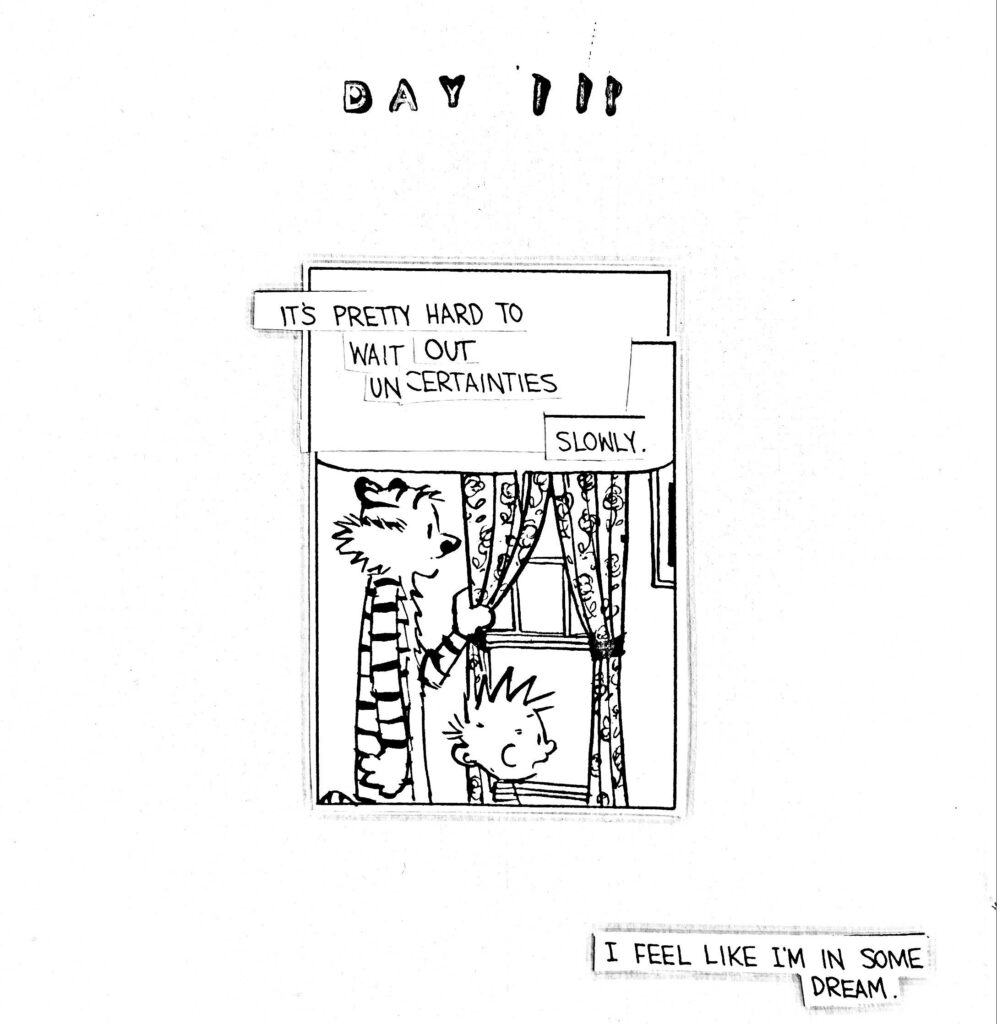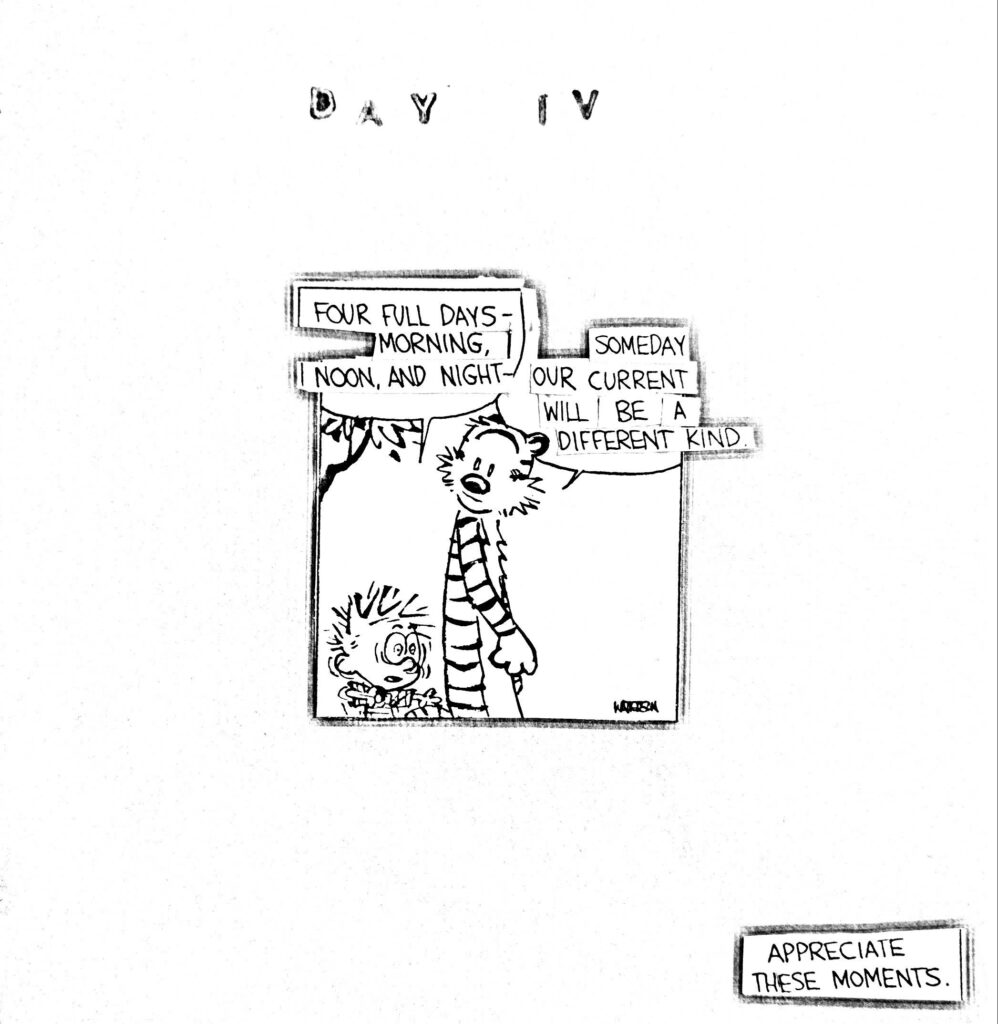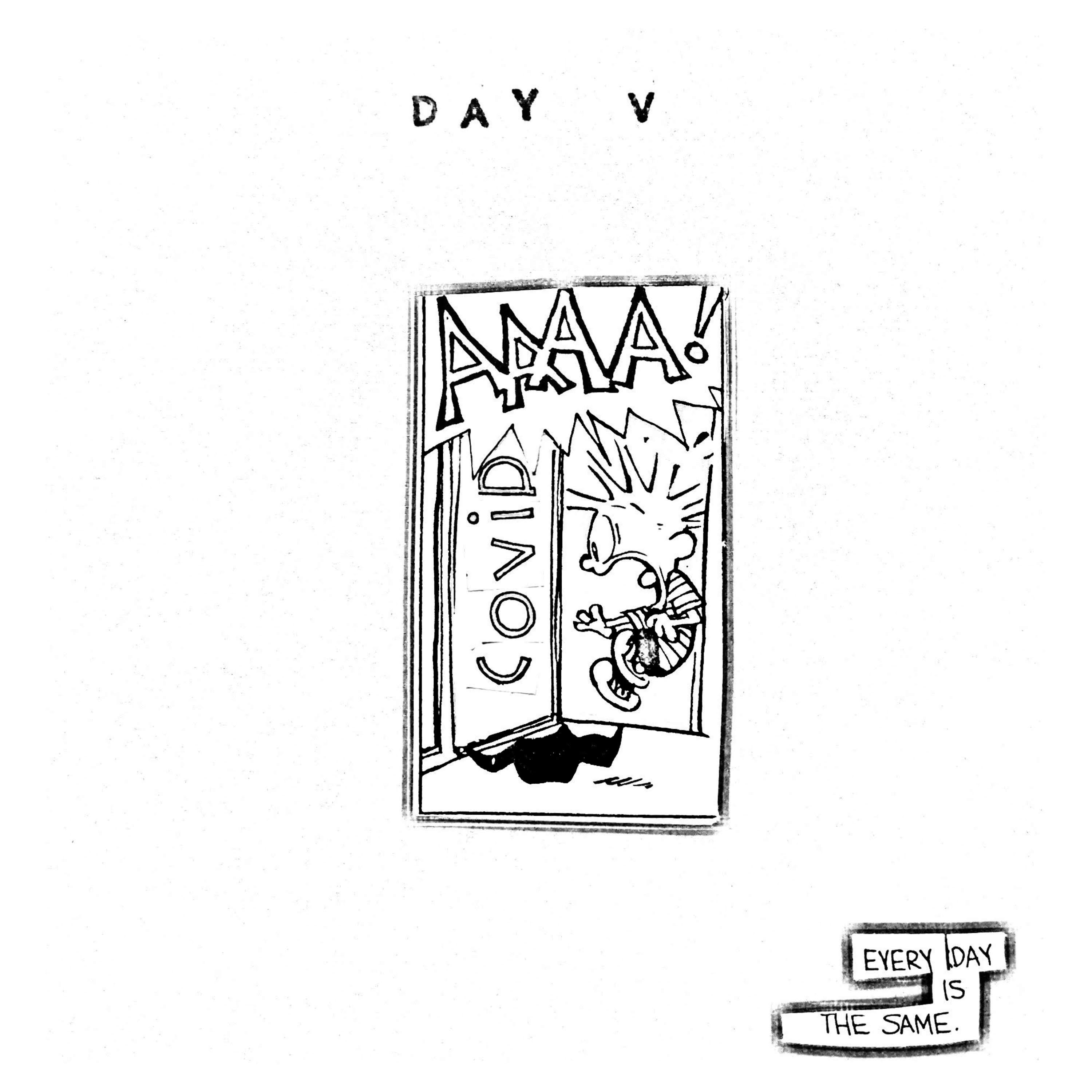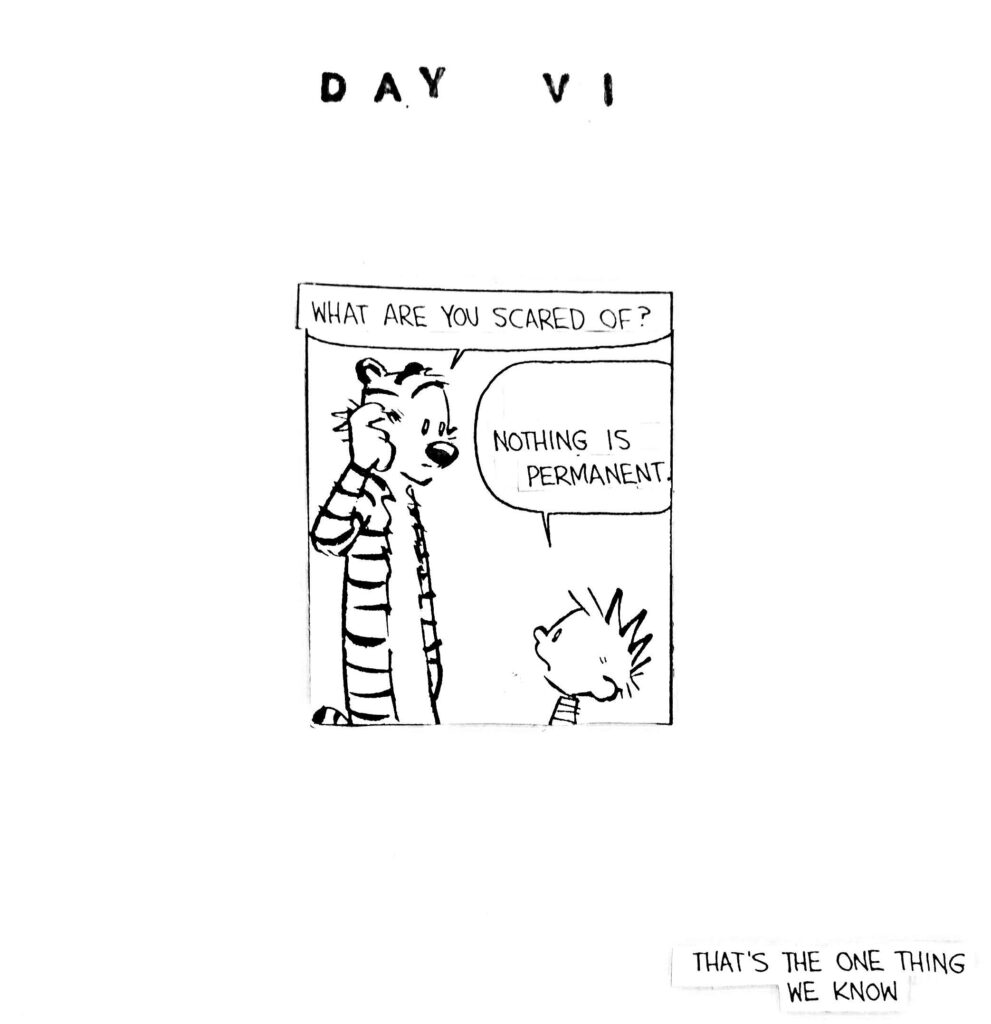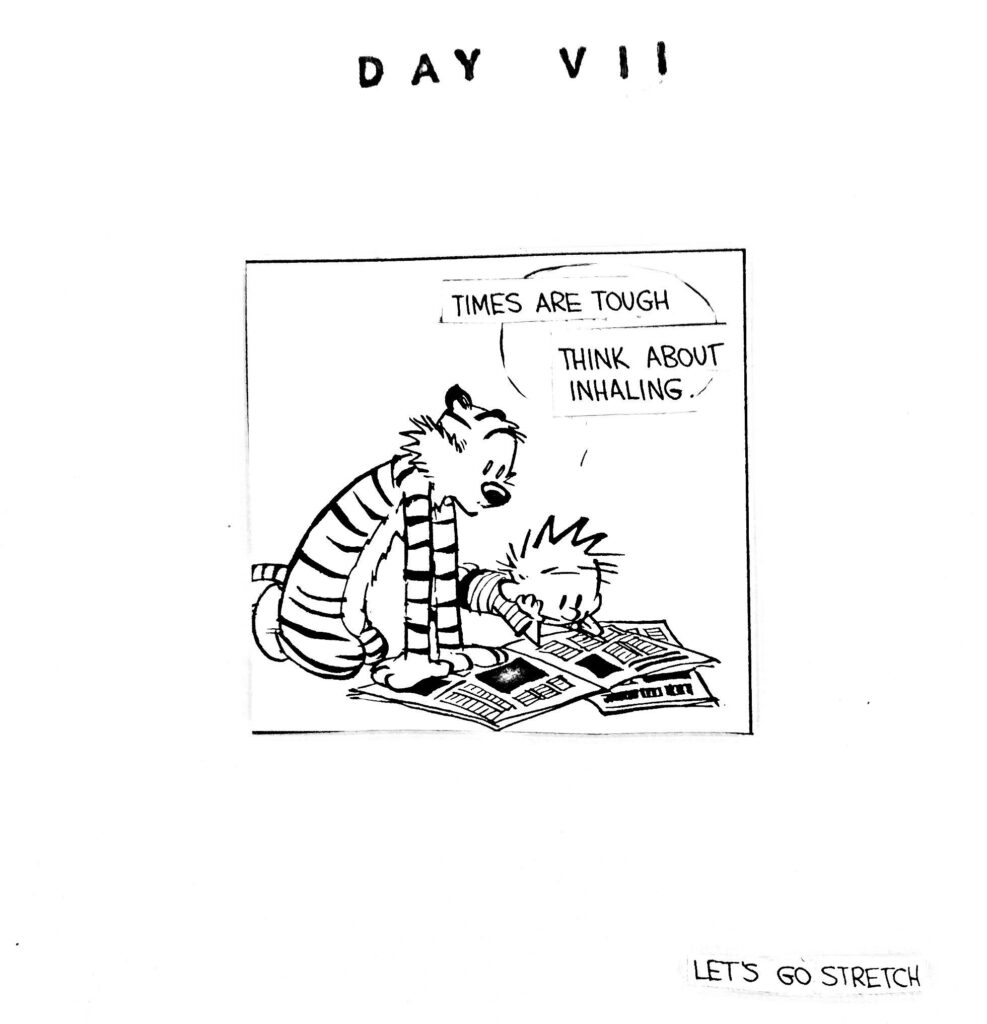Tag: my art
COVID & HOBBES: Week 2
COVID & HOBBES: Week 1
When words fail, create. Here is a new series I’ve been working on — a daily Calvin and Hobbes remix, the coronavirus version. I call it “COVID & HOBBES”.
My Toolbox: Birch Panels


“All life is an experiment. The more experiments you make the better.” -Ralph Waldo Emerson
Over the past year or so I’ve been exploring going bigger in my art. I have been painting and collaging in books since at least 2008, the largest pages of which have been about 11 x 14 inches. Creating single, stand-alone art — as an alternative to a bundle of spreads to be viewed as a multiple-paged whole — is new territory, as is experimenting with new materials.
Being used to a smaller, hard surface, attempting to switch to large canvas has been a new learning curve. Canvas has a lot of give, and it pushes me to use a gentler hand — something that ultimately changes the style of my art, I think, for better or worse.
A few weeks ago, though, I decided to try out wooden panels. They don’t come in as wide a variety of sizes as canvas, but is a good place to start broadening my horizons while working on a surface that retains some of paper’s characteristics. I bought some small panels on sale at Michael’s (their website is currently down) and later ordered larger ones from Amazon.
I’ve had a lot of fun experimenting on these. More experiments will certainly follow.


If you work or have worked on wooden panels before, I’d love to hear: do you gesso or otherwise prep the surface? Do you varnish the piece when you’re finished? Any other tips?
Page 55

I bought this small notebook in York, PA when visiting my dad’s gallery shows a few months ago. I wish I remembered the name of the bookmaker. The creator is JoAnne Schiavone. The pages are made of maps and heavyweight paper, perfect for mixed media play; and at about 5”x7”, there’s no apprehension about filling the whole space.
I’ve been trying to get back to that place of childlike expression. Kids are so uninhibited by norms and expectations, or even a sense of what is or isn’t impossible – making them the most creative of us all.
Blind contour drawing has always fascinated me. The practice of seeing something, not interpreting it; of focusing on the product, not the outcome. It’s hard to get out of your own way. Art, to me, is the freedom of doing just that.. and the scribbles and mark-making I’ve been practicing in this book are meant to encourage my own play and child-like exploration.
Collage, acrylic, and oil pastel.



